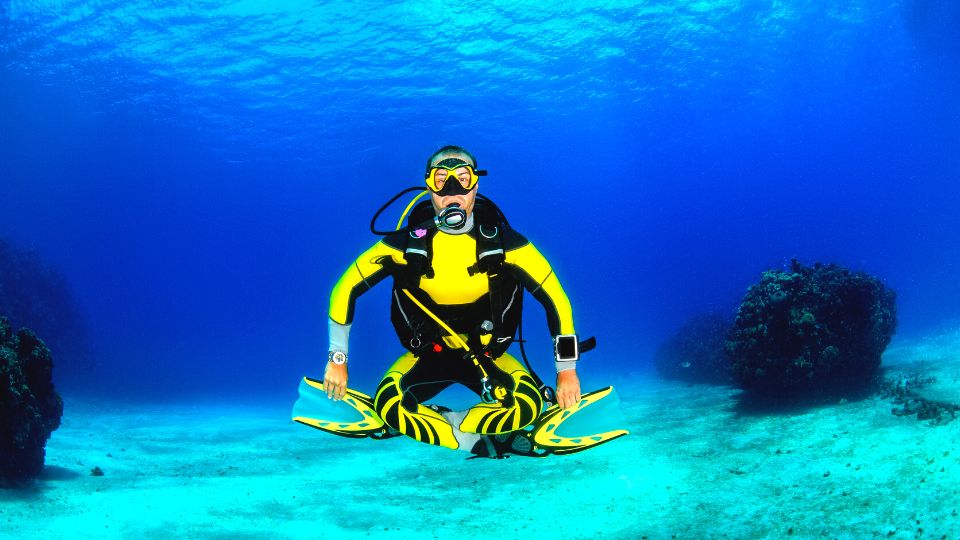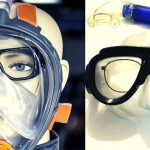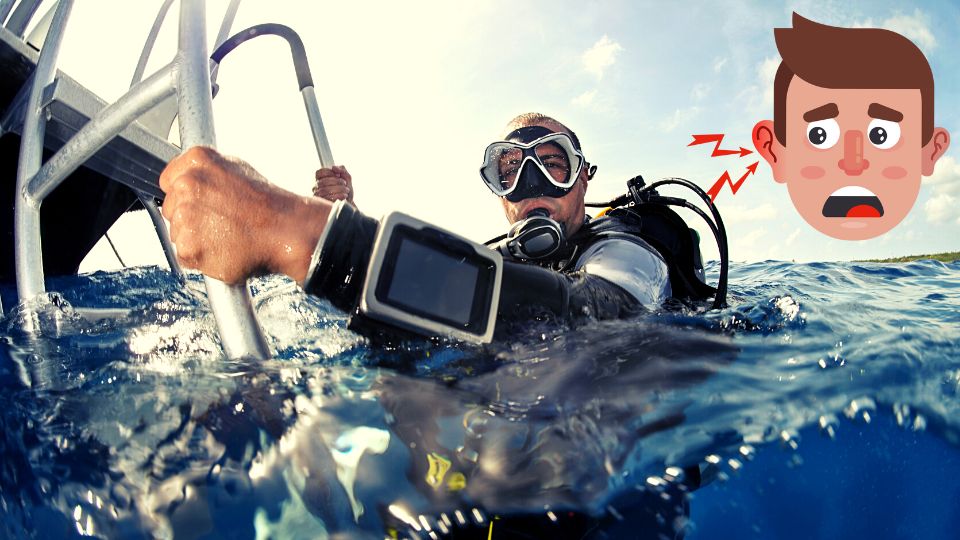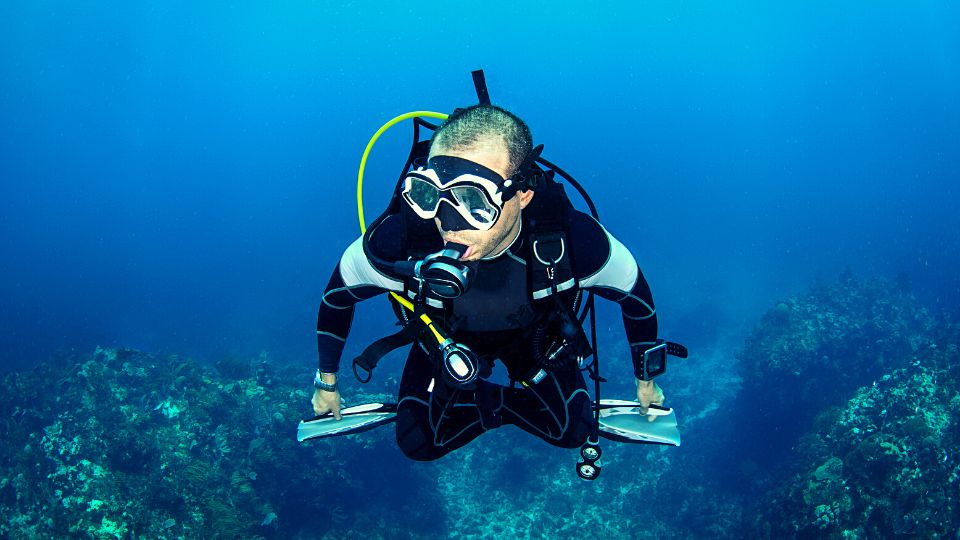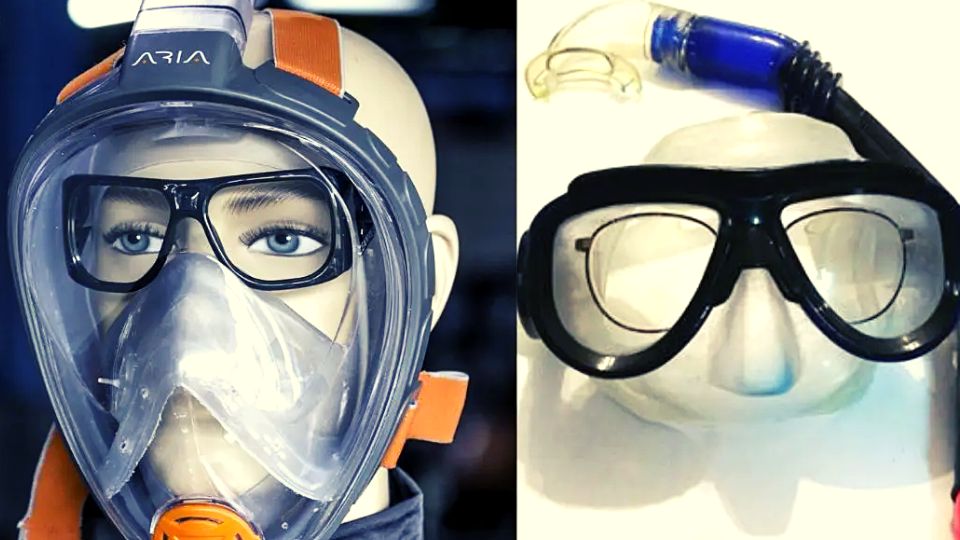Welcome to the most complete guide to scuba diving equipment costs! As a scuba diver, having the right gear is essential for a safe and enjoyable diving experience.
However, the cost of scuba diving equipment can add up quickly. In this guide, we’ll cover everything you need to know about scuba diving equipment costs, including average prices for individual pieces of equipment, how to save money on gear, and the best times of year to buy equipment on sale.
Whether you’re a seasoned diver or just getting started, this guide will help you navigate the world of scuba diving equipment and make informed purchasing decisions.
Is Scuba Gear Worth Buying?
Scuba gear can be expensive, and many beginner divers may question whether it’s worth buying or not. Here are some factors to consider when deciding whether to invest in your own scuba diving equipment:
Cost vs. Rental Fees
While purchasing scuba gear can be a significant investment, it can save you money in the long run. If you plan to go scuba diving frequently, renting equipment can add up quickly. On the other hand, buying your own gear means you won’t have to pay rental fees each time you go diving.
Comfort and Fit
Rental gear is often used by many different people and may not fit perfectly or be very comfortable. When you buy your own scuba diving equipment, you can ensure that everything fits properly and is comfortable to wear. This can make a big difference in your overall diving experience.
Personalization and Style
When you buy your own gear, you can personalize it to fit your preferences and style. You can choose gear that matches your preferred color scheme or has specific features that you prefer. This can make your diving experience more enjoyable and comfortable.
Equipment Quality
Rental gear is often well-maintained, but it may not always be in the best condition. When you buy your own equipment, you can ensure that it is of high quality and properly maintained. This can increase your safety and reduce the likelihood of equipment malfunction or failure.
Resale Value
Scuba gear can hold its value well, especially if it is properly maintained. If you decide that scuba diving is not for you, you can always sell your gear and recoup some of your investment.
Did you know? Many people might not realize that scuba diving equipment has evolved tremendously since the first scuba dive. The technology used in manufacturing, the materials used, and the design of equipment have all advanced significantly, making scuba diving much safer and more comfortable than ever before.
Types of Scuba Diving Equipment
It’s crucial to invest in quality scuba diving equipment to ensure your safety and comfort underwater. Many brands offer equipment in sets or packages that can help you save money.
When purchasing scuba diving equipment, be sure to take into account your individual diving needs, such as the type of diving you will be doing and the water conditions you will encounter.
Additionally, purchasing secondhand equipment can be a more affordable option, but it’s essential to ensure that any used equipment is in good condition and has been inspected by a professional before use.
Regulator
A regulator is the most important piece of equipment in scuba diving as it allows divers to breathe underwater. Regulators work by converting high-pressure air from the scuba tank into breathable air that is delivered to the diver through a mouthpiece. A regulator comprises two main stages, the first stage which reduces the pressure of the air in the tank, and the second stage which delivers the air to the diver’s mouth.
Regulators can range in price from $200 to $1,200 or more, depending on their features, quality, and brand.
Buoyancy Control Device (BCD)
A BCD is a vest-like piece of equipment worn by divers that provides buoyancy control, enabling the diver to ascend and descend effortlessly. BCDs also come equipped with pockets for carrying accessories, such as dive lights or signaling devices.
BCDs can range in price from $250 to $1,000, depending on the material, features, and brand.
Wetsuit
A wetsuit is an essential piece of scuba diving equipment that keeps divers warm underwater. Wetsuits trap a layer of water between the skin and the suit, which is then warmed by the diver’s body heat. Wetsuits come in varying thicknesses and materials, ranging from lightweight shorties to thick drysuits suitable for cold water diving.
The average cost of wetsuits can range from $100 to $600 or more, depending on the thickness, material, and brand.
Fins
Fins are crucial for scuba diving as they enable divers to move more efficiently through the water. There are many different types of fins, such as split fins or paddle fins, each with unique features and benefits.
Fins can range in price from $50 to $500, depending on the quality and features.
Mask
A scuba diving mask creates an air pocket around the eyes, enabling the diver to see clearly underwater. Masks come in different sizes and styles, and it’s important to select one that fits comfortably and has a good seal.
The average cost of masks can range from $50 to $150 or more, depending on the brand, material, and features.
Air Tank
An air tank is a vital piece of scuba diving equipment that provides the diver with the necessary air supply while diving. It is typically made of aluminum or steel and has a capacity of around 80 cubic feet of compressed air.
The average cost of an air tank can range from $150 to $500 or more, depending on the material and capacity.
Dive light
A dive light is used to illuminate the underwater environment and improve visibility, particularly in darker conditions. Dive lights come in different sizes and styles, and can vary in brightness and battery life. The average cost of a dive light can range from $50 to $300 or more, depending on the brand, size, and features.
Did you know that some scuba diving equipment, such as wetsuits and dive bags, can be made from recycled materials? Using recycled materials helps reduce waste and minimize the environmental impact of scuba diving. Additionally, some companies offer a trade-in program where divers can exchange their old gear for credit towards new equipment, making it easier to upgrade and replace gear without contributing to waste.
Factors Affecting Scuba Diving Equipment Prices
Scuba diving equipment is a crucial aspect of scuba diving, and it is important to invest in high-quality equipment to ensure a safe and enjoyable experience. However, the cost of scuba diving equipment can vary depending on several factors.
Brand
One of the significant factors that can affect the price of scuba diving equipment is the brand. Popular and established brands tend to cost more than lesser-known brands. This is because well-known brands often have a reputation for producing high-quality products, and they also invest in research and development to improve their products continuously.
Materials
The materials used in scuba diving equipment can also affect the price. High-end materials like carbon fiber, titanium, and high-quality neoprene tend to cost more than lower-quality materials. Equipment made from high-end materials may offer greater durability, performance, and comfort, which can justify the higher cost for some divers.
Features
The features included in the equipment can also affect the price. Scuba diving regulators with additional features like adjustable airflow or a balanced first stage will generally cost more than a standard regulator. Similarly, buoyancy control devices (BCDs) with integrated weights or more substantial buoyancy capabilities will cost more than simpler models.
Level of Quality
The level of quality of the scuba diving equipment can also be a determining factor in the price. High-quality equipment that is well-constructed and durable may cost more than low-quality equipment. For instance, a high-quality regulator may offer smoother breathing, better reliability, and longer-lasting performance than a lower-priced regulator.
Scuba Gear Package – includes BCD, Regulator, Gauges, and Dive Computer
A scuba gear package typically includes the essential gear needed for a scuba dive, including a buoyancy control device (BCD), regulator, gauges, and dive computer.
The average cost of a scuba gear package can range from $1,000 to $4,000 or even more, depending on the brand, materials, and features. Higher-end packages may offer more advanced technology and added safety features, while more budget-friendly options may offer a basic level of functionality.
Buying scuba gear in a set vs. individual pieces
When purchasing scuba diving equipment, you may have the option to buy individual pieces or a complete set. While buying individual pieces may seem like a more affordable option upfront, purchasing a set can often provide better value and long-term cost savings.
Benefits of Buying a Set:
- Cost savings: Buying a set of scuba diving equipment is often less expensive than purchasing each piece individually. Some manufacturers offer package deals with discounts for buying a complete set, saving you money in the long run.
- Compatibility: Purchasing a set from the same manufacturer ensures that all pieces are designed to work together, providing optimal performance and safety. This can also save you time and money in the long run, as you won’t have to worry about compatibility issues or purchasing additional components to make your gear work together.
- Convenience: Buying a set of scuba diving equipment can be a more convenient option, as you’ll receive everything you need in one purchase. This eliminates the need to shop around for individual components and ensures that you have all necessary gear before your next dive.
Benefits of Buying Individual Pieces:
- Customization: Buying individual pieces allows you to customize your gear to fit your personal needs and preferences. You can select specific components that suit your diving style, environment, and personal preferences.
- Quality: When purchasing individual pieces, you have the option to select high-quality components from different manufacturers. This can be especially beneficial if you have a specific preference for a particular brand or if you want the best possible gear available.
- Flexibility: Buying individual pieces provides more flexibility to mix and match gear as needed. You can replace pieces as they wear out or upgrade components over time as needed.
Buying Used Equipment
When deciding on what equipment to purchase, it’s important to consider the quality and durability of the gear, as well as the features that are necessary for your specific diving needs. You have to properly maintain and care for your equipment, which can help prolong its lifespan and save you money in the long run.
When buying used scuba diving equipment, you should thoroughly inspect the gear to ensure it is in good condition and safe to use. Look for signs of wear and tear, corrosion, and damage. You should also check the equipment’s service history to ensure it has been properly maintained and serviced.
It’s a good idea to buy used equipment from a reputable dealer or individual who can provide information about the gear’s history and condition. Keep in mind that while buying used equipment may be more affordable, it may not come with the same warranty or guarantee as new equipment. It’s important to weigh the potential cost savings against the risks involved with using older, potentially worn equipment.
Here are some potential differences in cost between purchasing new equipment versus buying used equipment:
- New equipment tends to be more expensive than used equipment, as it has not been previously owned or used.
- However, new equipment may come with a manufacturer’s warranty or other guarantees that provide added protection and peace of mind.
- Used equipment can often be purchased at a lower cost than new equipment, which can be appealing for those on a budget or just starting out in the sport.
- However, used equipment may have some wear and tear or other imperfections that can affect its performance, and may not be covered by any sort of warranty or guarantee.
- Buying used equipment also requires more research and inspection to ensure that it is in good condition and will function properly, whereas new equipment can be purchased directly from a reputable dealer or manufacturer.
- Some types of equipment, such as air tanks or regulators, may have a limited lifespan due to wear and tear, and purchasing used equipment that is nearing the end of its lifespan may not be the best investment in the long run.
- Ultimately, the decision between purchasing new or used equipment will depend on personal preferences, budget, and the condition of the specific equipment in question.
How to Save Money on Scuba Diving Equipment
Buying all the necessary equipment for scuba diving can quickly become expensive. Fortunately, there are several ways to save money on scuba diving equipment without sacrificing quality or safety.
Buy Equipment in a Set
One of the easiest ways to save money on scuba diving equipment is to buy gear in a set. Scuba diving equipment sets are pre-configured packages that include all the necessary gear for a complete dive, such as a regulator, BCD, and fins. Purchasing equipment in a set is often cheaper than buying individual pieces separately.
Buy Used Equipment
Another way to save money on scuba diving equipment is to buy used gear. While buying secondhand equipment may seem risky, many reputable dive shops sell high-quality used gear that has been inspected and tested. You can also find used equipment online through scuba diving forums or classified ad websites.
Purchase Gear During Seasonal Sales
Scuba diving equipment is often discounted during seasonal sales, such as Black Friday or end-of-season clearance events. This is a great opportunity to save money on new, high-quality gear. Keep an eye on local dive shops and online retailers for sales and discounts.
Consider Renting Gear
If you’re new to scuba diving or only dive occasionally, renting gear may be a more cost-effective option than buying your own. Renting gear can save you money on the upfront costs of purchasing equipment, as well as the ongoing maintenance and repair costs.
Prioritize Safety and Quality
While it’s important to save money on scuba diving equipment, safety and quality should always be top priorities. Don’t compromise on equipment that is essential for safety, such as regulators or dive computers. Always buy from reputable brands and manufacturers, and make sure your equipment is well-maintained and properly serviced.
Best times of year to buy scuba gear on sale
If you are looking to save money on scuba gear, timing your purchase can make a big difference. While prices can fluctuate throughout the year, there are certain times when you are more likely to find good deals on scuba gear.
Here are some of the best times of year to buy scuba gear on sale:
End of season sales
Many scuba diving retailers will offer end of season sales in the fall or winter to clear out inventory before the next season. This is a great time to find discounts on wetsuits, fins, and other gear.
Holiday sales
Black Friday, Cyber Monday, and other holiday sales can be a great time to find deals on scuba gear. Many retailers offer discounts on everything from masks to regulators during this time.
Trade-in events
Some scuba diving retailers and manufacturers offer trade-in events where you can bring in your old gear and trade it in for credit towards new gear. This is a great way to save money on new gear while also getting rid of old equipment.
New model releases
When new models of scuba gear are released, older models may be discounted to make room for the new inventory. Keep an eye out for new releases and check prices on older models to see if you can score a deal.
Online retailers
Online retailers such as Amazon, LeisurePro, and DiveInn often offer lower prices on scuba gear than brick-and-mortar stores. Keep an eye out for deals and discounts on these websites, especially during the holiday shopping season.
How To Increase Your Scuba Gear Lifespan
Here are some tips on how to increase the lifespan of your scuba diving equipment:
- Rinse and dry your gear thoroughly after each dive: Saltwater and sand can be corrosive and abrasive to your scuba gear. Rinsing your gear with fresh water and drying it completely after each dive can help prevent corrosion and extend the lifespan of your gear.
- Store your gear properly: When not in use, it’s important to store your scuba gear in a cool, dry place away from direct sunlight. Hanging your wetsuit can help prevent creases that can weaken the neoprene material.
- Maintain and service your gear regularly: Regular maintenance and servicing of your scuba gear can help identify and prevent potential issues, keeping your gear in good working condition and extending its lifespan.
- Handle your gear with care: Scuba gear can be fragile and expensive, so it’s important to handle it with care to avoid damaging it. Take care not to drop or bang your gear, and be cautious when transporting it to and from the dive site.
- Invest in quality gear: Investing in high-quality scuba gear can often be more expensive upfront, but it can save you money in the long run by lasting longer and requiring less maintenance.
By following these tips, you can help extend the lifespan of your scuba gear and get the most out of your investment.
Conclusion
Scuba diving is an exciting and rewarding sport, but the cost of equipment can be a barrier for people just starting out. However, with some careful planning and research, it is possible to find great deals on scuba gear.
Look out for end of season sales, holiday discounts, trade-in events, new model releases and online retailers offering good prices to help you save money on your scuba gear purchases. Additionally, taking proper care of your scuba gear by rinsing and drying it thoroughly after each dive and maintaining it regularly will help increase its lifespan so that you can get the most out of your investment.
Don’t let the cost of scuba gear stop you from enjoying this thrilling activity – with some savvy shopping you can find the perfect gear at a great price.

